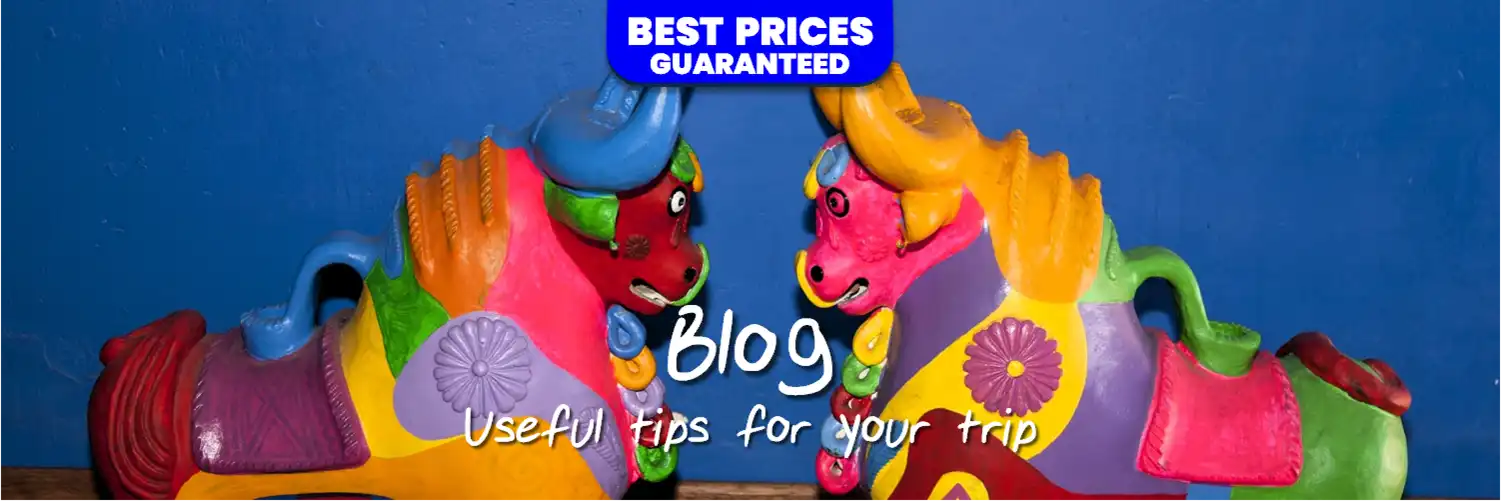10 Common Mistakes First-Time Travelers Make (and How to Avoid Them in Peru)

Introduction: excitement, chaos, and a little bit of wisdom
Your first trip is always a mix of pure excitement and mild chaos.
You want to see everything, eat everything, photograph everything — and that’s usually when the small mistakes sneak in. Forgetting to plan, overpacking, underestimating distances, or ignoring the effects of altitude can quickly turn an adventure into frustration.
The good news? Most travel mistakes are easy to avoid once you know what to expect.
This guide breaks down the 10 most common mistakes new travelers make in Peru, with simple solutions and real examples that will save you time, money, and headaches.
1. Planning too little (or too much)
Finding the balance between structure and spontaneity is every backpacker’s first lesson.
Some travelers arrive in Peru without checking visa rules, seasons, or transport schedules. Others go overboard and plan every hour of every day — leaving no space for the unexpected.
Mistake 1: Not researching enough.
Peru is bigger than it looks. Lima to Cusco is over 1,100 km — that’s a 22-hour bus ride or a 1.5-hour flight. Without research, you’ll waste money or burn out.
Mistake 2: Trying to see everything.
Lima, Cusco, Arequipa, Puno, and the Amazon in one week? Impossible. You’ll spend most of your trip on buses.
How to fix it:
Choose 3 main destinations and explore around them.
Use Rome2Rio or Omio to check travel times.
Base yourself in cities like Lima or Cusco, and take day trips.
Ask your hostel staff — at places like Pariwana Cusco or Pariwana Lima — for realistic local advice.
2. Overpacking (or bringing the wrong stuff)
Almost everyone does this.
First-time travelers tend to pack “just in case” items they’ll never use: extra shoes, heavy books, or bulky jackets for tropical weather.
The problem: weight, stress, and regret. Carrying an 18 kg backpack up Cusco’s cobbled streets isn’t romantic — it’s exhausting.
How to fix it:
Pack only what you actually used in the last three days at home.
Bring quick-dry clothes, layers, and one waterproof jacket.
Don’t pack for every possible situation — Peru has laundromats everywhere.
Leave space for souvenirs.
Remember: hostels like Pariwana offer laundry service and drying areas, so you can travel lighter.
3. Ignoring altitude sickness in Cusco
Altitude sickness, or soroche, is the most underestimated challenge in Peru.
Cusco sits at 3,400 meters above sea level, and even fit travelers can feel dizzy, nauseous, or short of breath.
How to fix it:
Rest the first 24–48 hours — no hikes, no partying.
Stay hydrated and avoid alcohol for a day.
Try coca tea or muña candies (traditional remedies).
If flying from Lima, stop for a night in Arequipa or the Sacred Valley to acclimatize gradually.
Staff at Pariwana Cusco can usually offer tips or basic oxygen support if symptoms appear — a big plus for new arrivals.
4. Relying too much on the internet
Connectivity in Peru is good in major cities, but patchy elsewhere.
Many travelers depend on Wi-Fi for everything — maps, translations, bookings — until they find themselves lost with no signal.
How to fix it:
Download offline maps (Google Maps or Maps.me).
Save all bookings as screenshots or PDFs.
Learn a few basic Spanish phrases.
Carry cash (Peruvian soles) — not all shops or markets accept cards.
Lima and Cusco are well connected — especially in hostels that cater to digital nomads, like Pariwana Hostels, which provide free coworking areas with high-speed Wi-Fi — but once you leave urban areas, signal is far from guaranteed.
5. Ignoring health and food safety
Peru is world-famous for its cuisine, but that doesn’t mean your stomach will adapt overnight.
Common mistake: eating ceviche anywhere, at any time.
Street food can be amazing — but also risky if you’re not used to it.
How to fix it:
Eat ceviche at lunch, not dinner (when it’s freshest).
Drink bottled or boiled water only.
Wash fruits before eating.
Bring basic meds (for fever, diarrhea, altitude).
Get travel insurance that covers medical care in Peru.
Hostels like Pariwana Lima are great for local tips — staff and guests often recommend trusted, authentic spots beyond tourist traps.
6. Underestimating distances and travel times
Peru’s geography is stunning — but deceiving.
From deserts to mountains and jungle, every road takes time. First-timers often assume distances are short because the map looks small.
Reality check:
Lima–Cusco: 20–24 hours by bus.
Cusco–Puno: 8 hours.
Cusco–Sacred Valley: 1.5–2 hours (depending on traffic).
How to fix it:
Check schedules directly with bus companies (Cruz del Sur, Oltursa, Civa).
Plan rest days between long journeys.
Split trips with overnights in major hubs.
Don’t forget: good sleep is as important as good photos.
7. Forgetting about personal safety
Peru is friendly and welcoming, but petty theft and scams happen, especially in busy areas.
Common mistakes:
Leaving bags unattended.
Accepting “help” from strangers at ATMs.
Taking unregistered taxis.
Flashing expensive cameras or phones.
How to fix it:
Use official or app-based taxis.
Store valuables in hostel lockers (Pariwana offers large, secure ones).
Carry only what you need each day.
Keep backup cash hidden in a separate spot.
Travel smart, not paranoid — awareness is enough.
8. Ignoring local customs
Peru’s cultural diversity is huge, and respecting it matters.
Some travelers arrive without realizing that traditions and beliefs are still deeply alive, especially in Andean communities.
Examples:
Taking photos of locals without asking.
Entering temples with hats or loud conversations.
Bargaining disrespectfully in markets.
How to fix it:
Learn polite phrases in Spanish or Quechua.
Ask before photographing people.
Be humble — you’re a guest in someone else’s world.
If you’re curious about Andean culture and respectful travel, check the Pariwana Blog, which features stories from travelers and locals alike.
9. Missing out on the traveler community
Some first-timers treat travel like a solo competition — but the truth is, shared moments are what make a trip unforgettable.
How to fix it:
Join group activities: cooking classes, game nights, walking tours.
Talk to other travelers in your hostel kitchen or common areas.
Use apps like Meetup or Tandem to connect with locals.
Be friendly, but also respect personal space.
Hostels like Pariwana are designed to make socializing easy, with daily events like karaoke, beer pong, and salsa nights that bring people together naturally.
10. Forgetting to live the moment
In the age of Instagram, it’s tempting to see travel through a lens — but the best memories often come when the phone stays in your pocket.
How to fix it:
Take a day off from photos.
Don’t rush to see everything.
Walk, watch, and listen — let the place unfold.
Remember: the best stories are lived, not posted.
Conclusion: travel smarter, not harder
Every traveler makes mistakes — that’s part of the adventure.
But with awareness and humility, each mistake becomes a story instead of a setback.
Peru rewards those who travel slow, stay curious, and stay open. From Lima’s cliffs to Cusco’s cobblestones, every corner offers a chance to learn — about others, and about yourself.
And when things go wrong, don’t panic. There’s always a friendly face, a warm bed, and a story waiting to be shared. That’s what traveling is really about.
✍️ Pariwana Editorial Team
Practical travel tips written by backpackers, for backpackers.

Practical tips to enjoy Latin America without breaking your budget.


